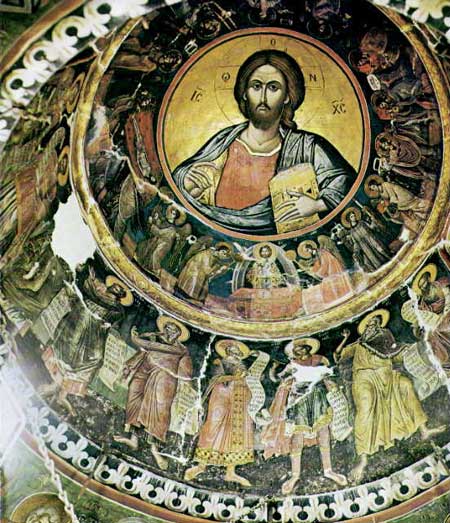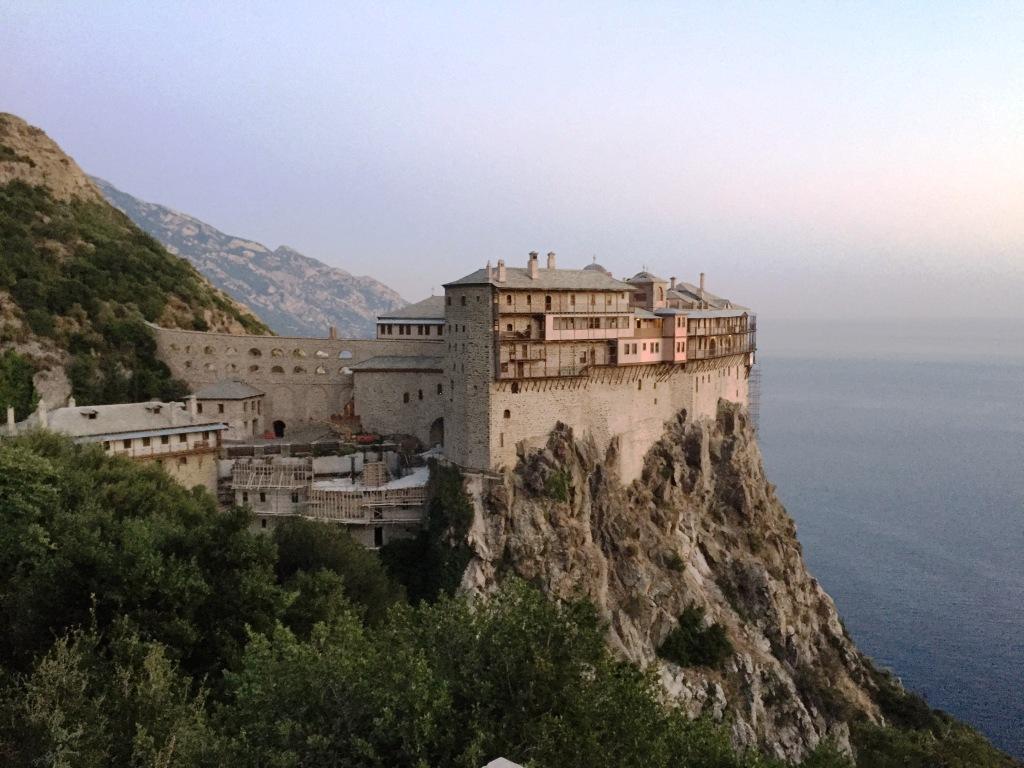
Mount Athos is a unique monastic community of 20 monasteries and many other smaller hermitages. Nea Roda is close to the border of Mount Athos and offers the opportunity to visitors to view the unique for their Byzantine architecture monasteries or even visit them.
Mount Athos is the oldest surviving monastic community in the world, established more than 1000 years ago. It is a unique monastic republic inhabited entirely by monks which although it is part of Greece it is governed by its own administration. It consists of 20 monasteries, 12 Skites (similar to monasteries but much smaller), a number of Kelia (farm houses with a number of monks), Kathismata (houses where a single monk lives) and an unknown number of hermitages, hiding away in caves and impossible cliffs.
The Mount Athos peninsula is a rugged and wild part of the country consisting of deep ravines, crowned by the Athos mountain itself, rising 2,039 meters high. It is a place steeped in tradition and owe inspiring scenery. The monasteries resemble fortified towers built in Byzantine times. For a start, there is no main road connecting Mount Athos to the outside world. No electricity either. Traditionally, they still use the Julian calendar which is 14 days behind. At sunrise the clock shows 1 o’clock and at sunset it shows 12 o’clock. It is dedicated to Virgin Mary and women are not permitted to enter. Male visitors need to obtain a permit (Diamonitirio) in order to enter and can only travel there by boat.
Mount Athos has its own system of government. Each monastery is independent, governed by the Hegumenos (Abbot). Each monastery sends a representative to Karies, the capital, to form a committee which governs Mount Athos.
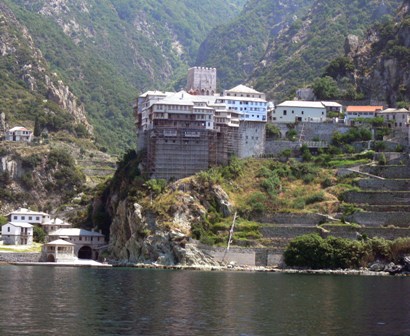
Dionisiou Monastery
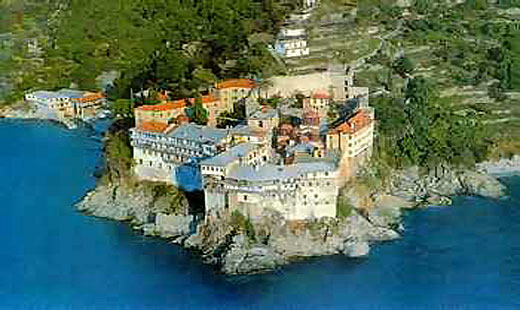
The legent of Virgin Mary
A popular legend on Mount Athos tells the story of Virgin Mary landing on the isolated shores. It goes like this. Panagia, the Virgin Mary, accompanied by St John the Evangelist, was sailing from Joppa to the island of Cyprus in order to visit Lazarus. Suddenly the ship was blown of course towards what was then a pagan mountain. They sought refuge in the port of Klement which is believed to be near the monastery of Iviron. The Virgin Mary stepped ashore and she was instantly overwhelmed by the wild natural beauty of the mountain. She offered her blessing and asked her Son Jesus for it to be her garden. A voice was heard; “let this place be your inheritance and your garden, a paradise and a haven of salvation for those seeking to be saved”. From that moment the mountain was consecrated as the garden of the Mother of God and is out of bounds to any other women.
Herodotus, the ancient historian mentions that there were a number of cities on Mount Athos and also an oracle of Apollo. The first Christian hermits there appear in the 7th century AD but the first monastery was the Great Lavra which was built in 963 AD by Athanasios.
Traditions on Mount Athos
The life of the monk is divided into three equal parts, one for praying, one for working and one for resting. He wakes up to the repetitive beat of the symantron ( a long plank of wood hit by a mallet ) at 11 p.m. for an hour of private prayer. Counting the knots of the rosary he repeats the Kyrie Eleison “Lord Jesus Christ, have mercy on me”. He goes back to sleep until 4 a.m. when the sounds of the symantron fill the courtyards and the dark corridors once more, inviting everybody to the church for matins. The Liturgy follows, timed to be celebrated at sun-rise, when the gates of the monastery open. At the end of the Liturgy, at about 10.30 a.m., the Hegoumenos (Abbot) leads his monks to the refectory for the main meal of the day. After the meal everybody goes to their allocated tasks.
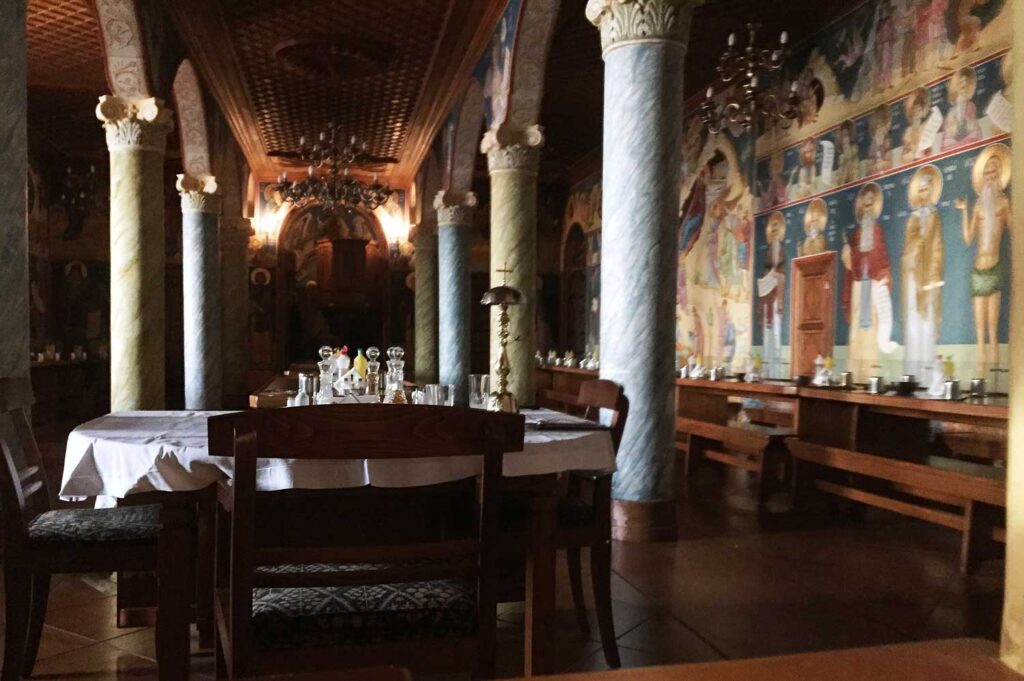
Vespers are celebrated at the end of the day at 5 p.m.. Following vespers the monks and pilgrims have their supper at 7 p.m., the heavy gates to the monastery close and the monks are free to retire. On festive occasions a vigil is celebrated which calls for a continuous service throughout the evening, night and the following morning.
The monks and their guests take their meals in the refectory. Throughout the meal a reader on a pulpit reads from the New Testament. The food is basic: a seasonal salad, baked beans or lentils cooked in plenty of water like soup, a dish made of all the seasonal vegetables cooked together in one pot, salted fish, olives, feta cheese, brown bread, fried potatoes and always the delicious local wine. At festivals fish is served but never meat. The Hegoumenos (Abbot) sits at the top table and marks the start and the end of the meal by ringing a bell and saying a prayer.
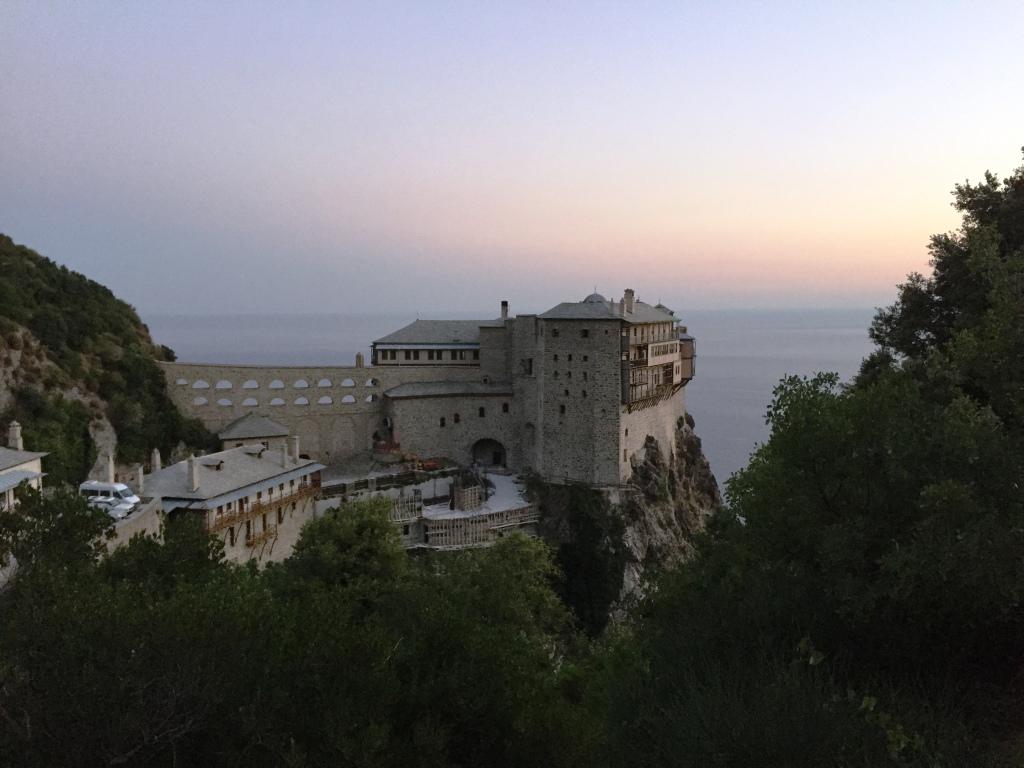
The monastery of Simonos Petra
High up on the steep mountain, at the top of a winding cobbled path, somewhere between earth and heaven, stands the despotic frame of the Holy Monastery of Simonos Petra. Perched on a titanic bolder, with terraced vegetable gardens at it’s feet, it is an impossible feat of ancient engineering. Seven storeys high, austere and awe inspiring, it is the iconic image of Mount Athos, the most magnificent remnant of the Byzantine empire.
And so the story goes… Father Simon was a hermit living his frugal existence in a small cave. His days were filled with prayer and contemplation, his only company being the birds and wild animals, his garden the lush mountain forest. One Christmas night he glanced over the ragged landscape and saw a flickering light on top of a bolder. In the darkness he heard a voice, instructing him to build a great monastery right on top of that bolder. Father Simon was shaken. He recognised the voice of the Virgin Mary but the task she has set him seemed impossible for a poor hermit like him.
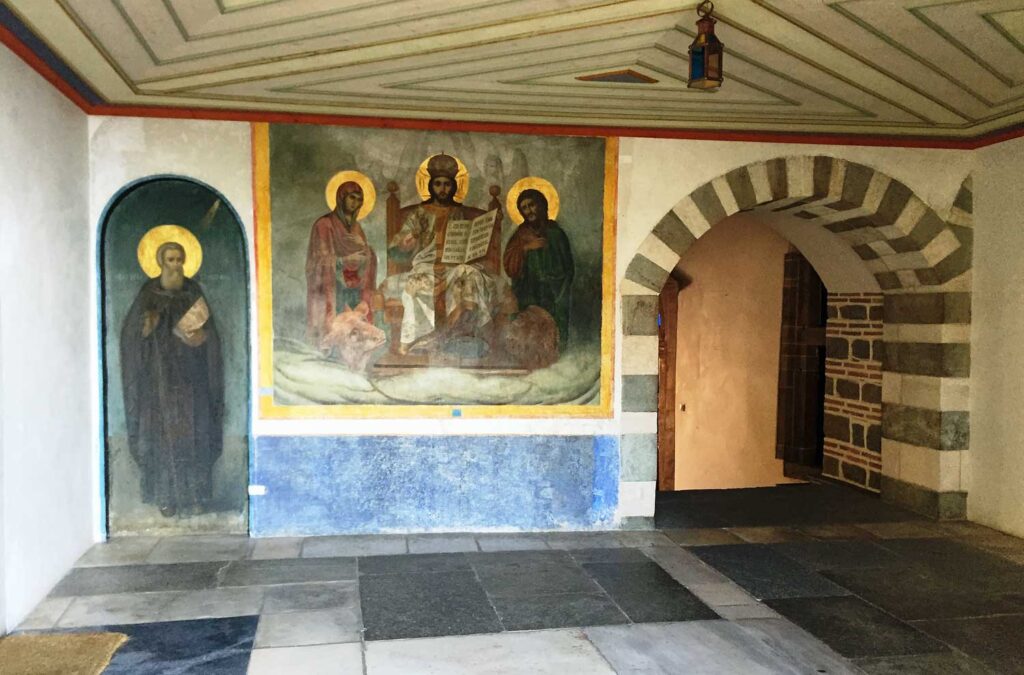
Perhaps it was just a dream, perhaps he imagined things, so he did nothing for a while. Then another night he saw the light again. The voice of Virgin Mary was heard again. “Build me a monastery where the light is showing and the name of that monastery to be The New Bethlehem. Have faith.” On the third time the voice was more forceful and Father Simon felt he had to act on it. He started the impossible sacred task, not knowing if he could ever finish. It was the year 1257.
It was difficult for Father Simon to find masons brave enough to undertake the seemingly impossible feat. Despite their scepticism the masons started work. On the very first day, a young monk was serving the workers with food and wine, when suddenly he slipped and fell down the steep ravine, still holding the wine pitcher and the cup.
The masons were shocked. Was it a sign? Is the task they have undertaken a folly that will end in death for them? Then, the miracle happened. The young monk appeared from the edge of the precipice, unharmed, safe and well, still holding the wine pitcher and the cup. Not a drop of wine was spilled. The masons were moved by the miracle and their hearts filled with confidence that for sure they were doing the bidding of Virgin Mary. It took years but with the help of Virgin Mary the imposing monastery was completed and it was named The New Bethlehem. Later it was named Simonos Petra, the rock of Simon, in honour of it’s founder. It celebrates on the day Jesus was born, the 25th of December by the Mount Athos (Julian) calendar which falls on the 7th of January by our calendar (Gregorian).
Pilgrimage to Mount Athos
Mount Athos is primarily a place of solitude, prayer and contemplation. The Monks of Mount Athos like to think that visitors are there as pilgrims to pray with them rather than as tourists. To protect Mount Athos from hordes of tourists who may detract from the prayer and contemplation they have introduced certain rules which are administered by the Mount Athos Pilgrim’s Bureau.
Women are not permitted to enter Mount Athos at any time. Male visitors are permitted to stay for only 4 days and traditionally accommodation and food is provided free by the monks. To enter Mount Athos you need a permit (Diamonitirio) which is approved by the Mount Athos Pilgrim’s Bureau and is issued by the Pilgrim’s Bureau in Ierissos or Ouranoupolis which are the two itinerary ports.
For detailed information on visiting Mount Athos and the procedure to obtain a permit it is advisable to visit the website of Friends of Mount Athos. Their Pilgrim’s guide has all the information that you need for your visit.
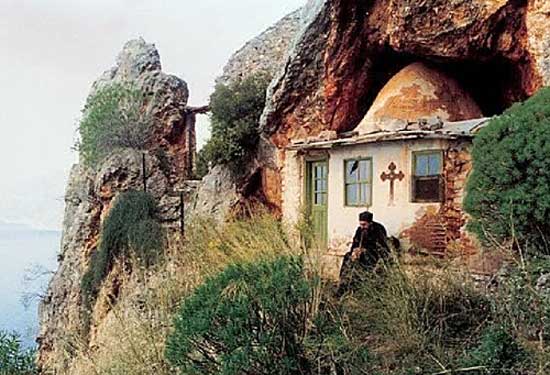
A hermit sitting in front of his hut

The richly ornate church of Vatopedi monastery.
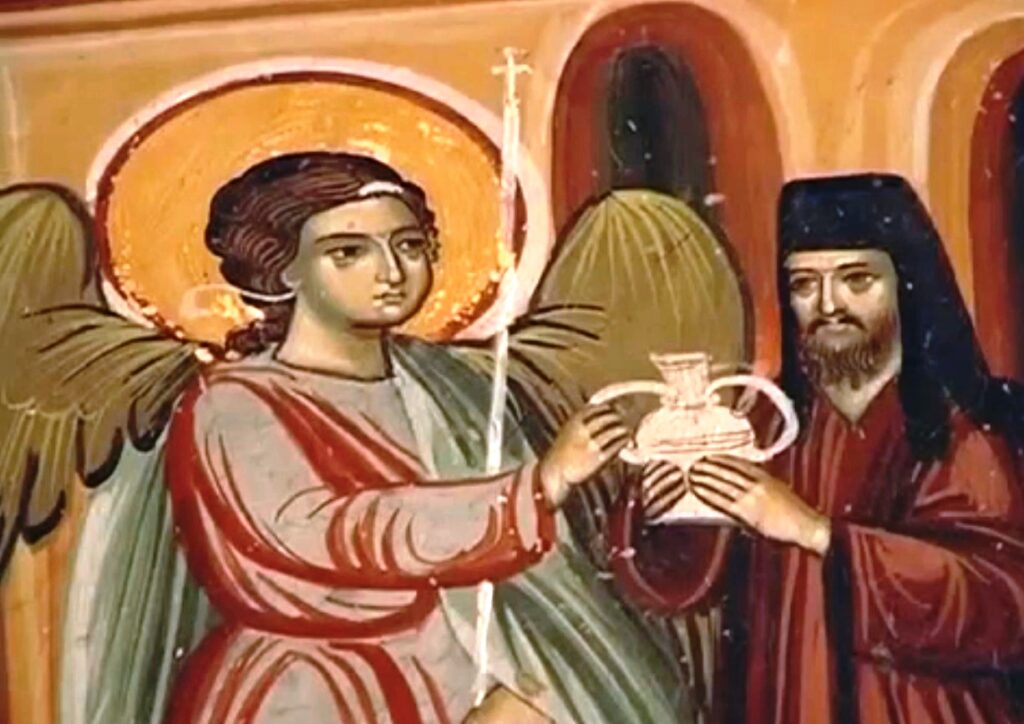
Church Murals
Icon of Virgin Mary
